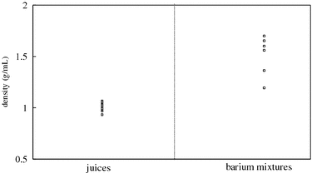

A measurement on a rotational viscometer/rheometer in which the shear rate is increased step-wise and the respective shear stress is determined for each shear rate is called a flow curve. The results of a rotational test can be displayed on the one hand as a flow curve diagram showing the resulting shear stress values, and on the other hand as the corresponding viscosity function. Typical rotational tests are viscosity functions that depend on shear rate, shear stress, time, or temperature. Such a measurement, where the shear rate is increased and the resulting shear stress is measured, is called a flow curve. This means that the viscometer translates the chosen shear rate into speed and measures the resulting torque, which it then translates into shear stress.

In a typical rotational test, the shear rate is preset. Torque × conversion factor = shear stress Usually, this is automatically done by the instrument. The viscometer’s speed is converted into shear rate using a conversion factor (the factor depends on the measuring geometry used) and the torque is also converted into shear stress using a conversion factor. The physical properties speed and torque can be translated into the rheological properties shear rate and shear stress if the measurement is performed using a standard measuring geometry according to ISO 3219. When we measure the viscosity on a rotational viscometer we apply to the sample a certain shear stress or a certain shear rate, respectively. Newton's Law defines the dynamic viscosity η as the shear stress divided by the shear rate. This torque has to overcome the viscous forces of the tested substance and is therefore a measure for its viscosity.Ī rotational viscometer measures the dynamic viscosity of a sample. The rotational speed of the bob is preset and produces the motor torque that is needed to rotate the measuring bob. Most rotational viscometers/rheometers work according to the Searle principle: A motor drives a bob inside a fixed cup.


 0 kommentar(er)
0 kommentar(er)
